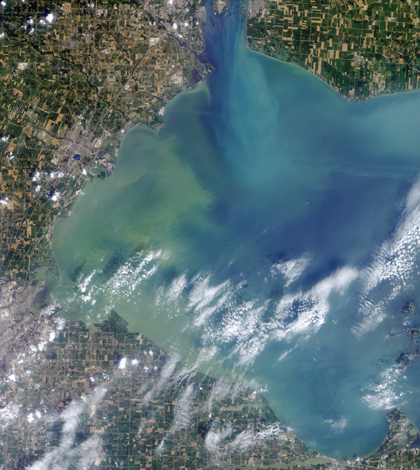Lake Erie algae-induced Toledo water ban lifted, highlighting sensitive U.S. water systems

A satellite image of the algae bloom on Lake Erie on Aug. 1, 2014 (Credit: NASA)
A drinking water ban that affected nearly half a million people in Toledo, Ohio, has been lifted, according to The Washington Post. The ban came after high levels of microcystin, a toxin, were found at a water treatment plant near Lake Erie.
Experts say an algae bloom in the lake’s western basin had gotten stronger a few days before the ban. Though scientists predicted blooms would return in Lake Erie this summer, forecasting such an impact to Toledo’s drinking water was nearly impossible because toxin levels associated with blooms vary.
The recent ordeal is just one of many illustrating the sensitivity of drinking water systems in the United States to climate change and environmental degradation. These include chemical spills like the one occurring in West Virginia’s Elk River earlier this year and expected lower Great Lakes water levels in the future.
Image: A satellite image of the algae bloom on Lake Erie on Aug. 1, 2014 (Credit: NASA)




Pingback: Lake Erie Data Buoy Tracks Algal Blooms For Researchers, Gibraltar Island Residents - Lake Scientist